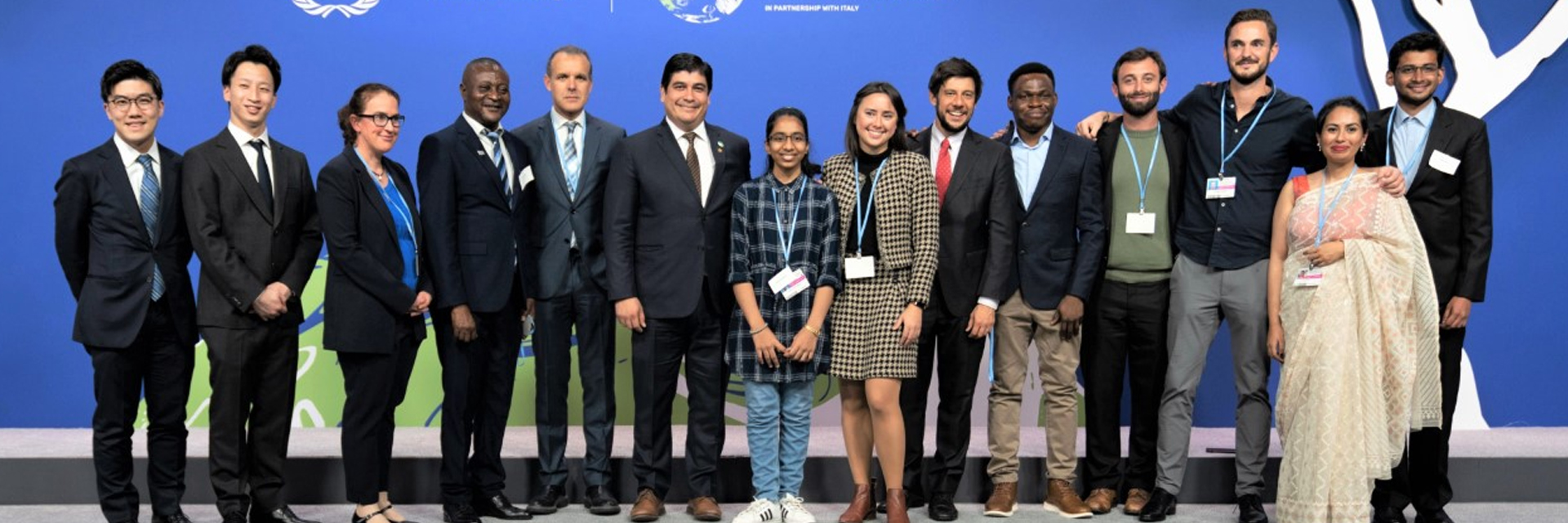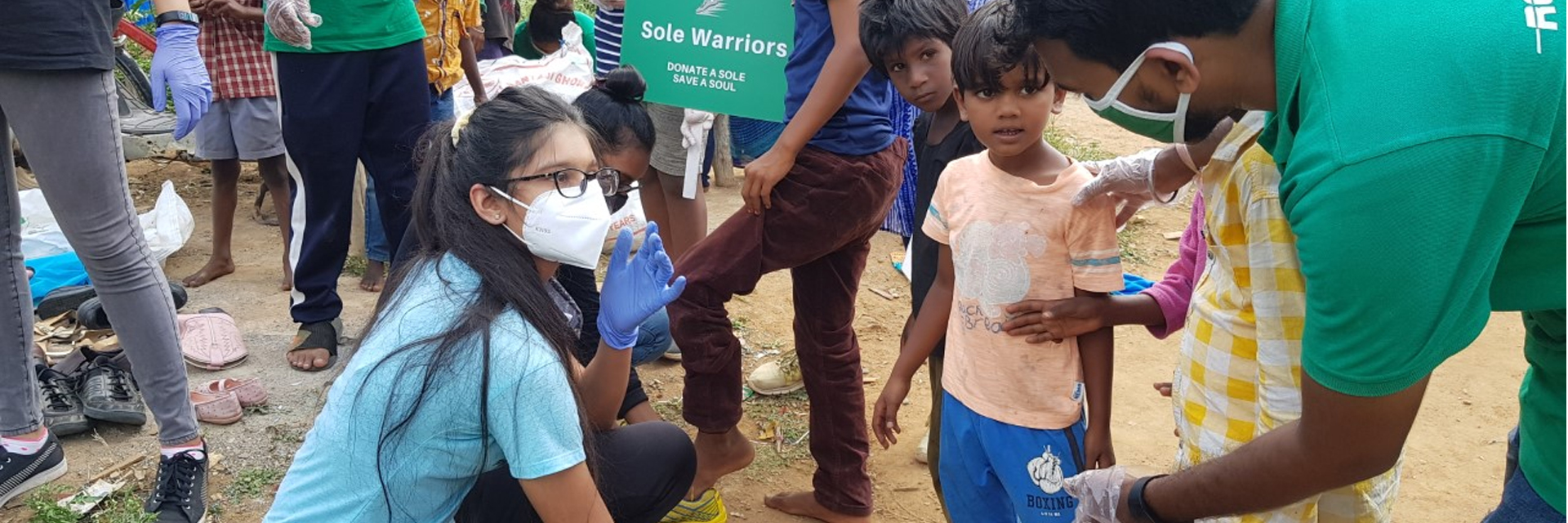(January 12, 2022) “We have every reason to be angry. But I have no time for anger. I want to act. I am not just a girl from India. I am a girl from Earth and I am proud to be so,” smiled the pint-sized bespectacled Vinisha Umashankar at the United Nations Climate Change Conference (COP26) in Glasgow. The student innovator, environmentalist, entrepreneur and optimist had Prince William, and other world leaders in awe. Suddenly, a toothy 15-year-old Indian environmentalist was in the reckoning.
However, this native of Tamil Nadu is not ready to rest on her laurels, and demands action. “All of us should understand that environmental issues are real and can’t be fixed later. Most importantly, they are not someone else’s problem. We all must work together to understand environmental problems and solve them before it is too late. Today’s actions matter tomorrow,” says Vinisha, who is one of the eight baton-bearers to carry the Commonwealth Games 2022 torch in India from January 12 to 15, 2022.
Being the youngest and the only school student to earn a spot among the finalists for The Earthshot Prize 2021, the TEDx speaker was invited by Prince William, The Duke of Cambridge, to speak at the World Leaders’ Summit at the COP26 in November 2021. Such was the impact of her five-minute speech that global leaders like US President Joe Biden, British Prime Minister Boris Johnson, Bill Gates, and PM Narendra Modi gave her a standing ovation. Vinisha’s plea has since gone viral with over 30 million views.
Enriched to be in the company of the minds whose innovations and solutions are making an impact on Earth, she was apt and self-assured. “COP26 was quite critical because we have to plan actions for the next 10 years, and execute them together for a better future. I am keen to take forward what I learnt to make the Earth better,” adds the Dr APJ Abdul Kalam IGNITE Award winner (2019).
Thinking beyond fossil fuels
Her invention of a solar-powered ironing cart became the lodestar. She was just 12 when she started designing her innovation after the idea struck when accompanying her mother to deliver ironing clothes.
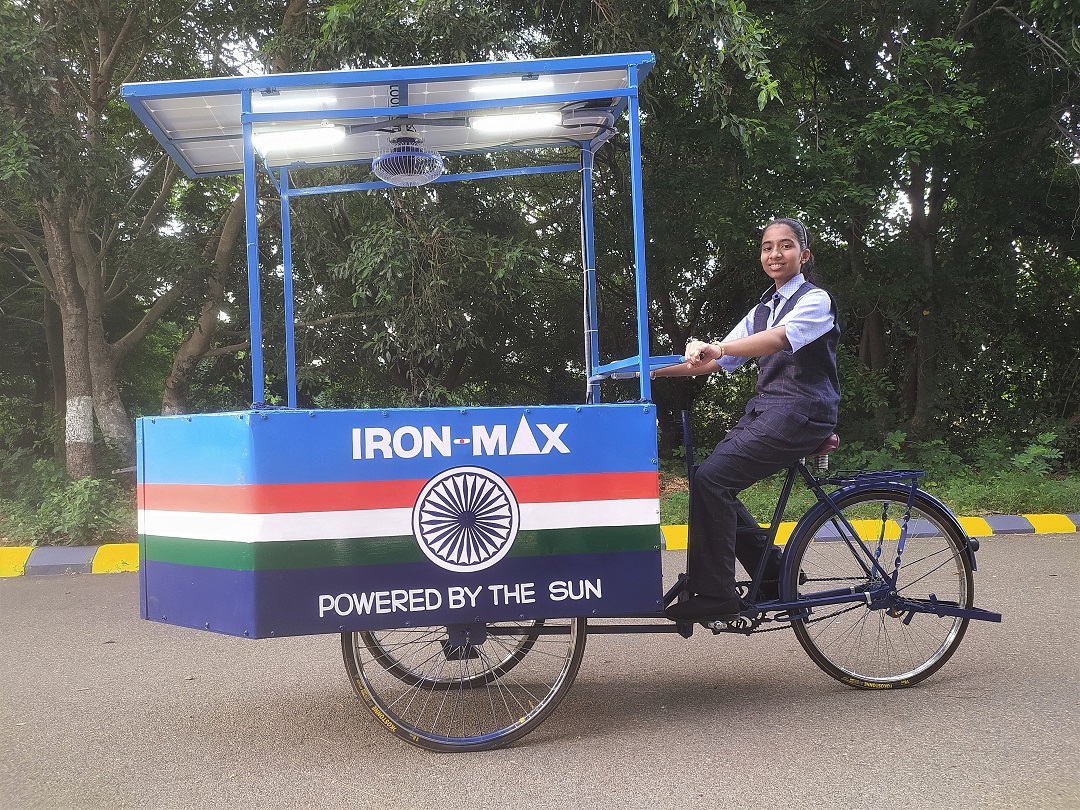
The Solar Ironing Cart
Seeing six ironing vendors in her neighbourhood, Vinisha saw how charcoal burning is a serious threat to the environment. “They use charcoal to heat an iron box, and usually throw the burnt charcoal away with the garbage. It made me think about the number of ironing carts in India, the amount of charcoal burnt every day, and the damage done to environment,” says the SKP Vanitha International School student, who found her “eureka” in solar power which effectively substitutes charcoal. “Using renewable solar energy is the aim of my innovation,” Vinisha says in an exclusive with Global Indian.
Cleaning the air, making us breathe
The innovation won her the Children’s Climate Prize in 2020, and helped her get a slot as a finalist at The Earthshot Prize in the Clean Our Air category in 2021. “I was happy that environmental innovations like a solar ironing cart got due recognition. It can play a crucial role in reducing environmental damage and climate change. I hope my innovation motivates students to innovate on products that could help protect the environment for future generations. I am happy that the solar ironing cart is my little contribution towards an ambitious goal,” says the confident young inventor.
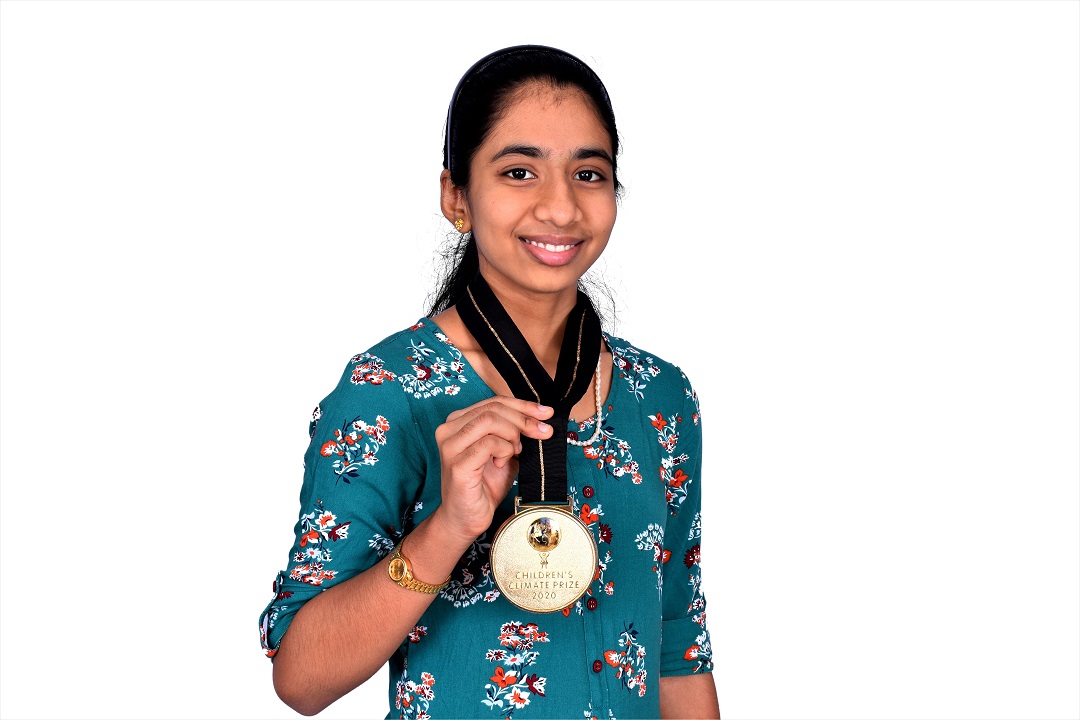

Vinisha Umashankar won the Children’s Climate Prize 2020.
Vinisha’s invention is built on an integral-type chassis, the ironing cart, “can be fitted with a coin-operated GSM PCO, USB charging points, and provide mobile recharging services. The solar panel doubles as the roof of the ironing cart,” she adds.
The girl who reads too much
Born in 2007 in Tiruvannamalai (Tamil Nadu), her business consultant father and school teacher mother realised how fascinated she was by science and maths as a child. They are the wind beneath her wings, and her biggest support system. “My parents bought me many books to read, and explore,” reveals the Class 10 student, who often accompanies her parents to museums, zoological parks, botanical gardens, palaces, and forts. Her love for Nature and environment stemmed from these visits, and to country farms and animal asylums.
As one of the eight baton bearers from India to carry the Commonwealth Games torch and a participant at the Vibrant Gujarat Global Summit, she is also preparing for her boards. How she strikes a balance between the acclaim, endeavours and studies evokes a smile. Her time management skills, she explains, “I sort my scholastic and co-scholastic activities a day or week in advance. I prepare a to-do list, and finish it one by one. I schedule everything meticulously so that I don’t spend too much time on a single activity – all done a little at a time rather than in one long slot! However, I listen to music, go for a walk, exercise and relax in between activities.”
A tale of many talents
Despite her hectic schedule, Vinisha finds time to unwind curling up with a book, cycling or trying her hand at photography. A yoga and gymnastics enthusiast, she has a Grade 4 electronic keyboard certification from Trinity College London too.
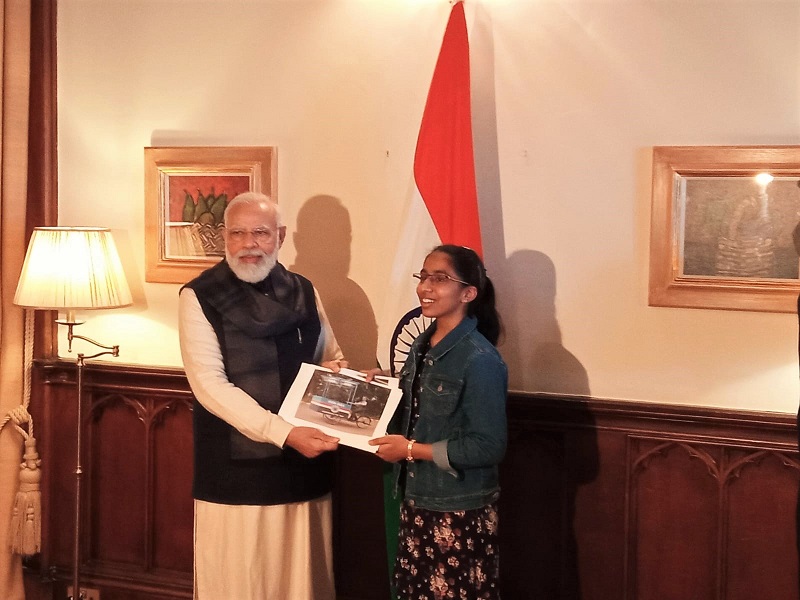

Vinisha Umashankar with PM Narendra Modi at COP26
Having accomplished so much so young, she advises youngsters “to believe.” “If you think that you can move a mountain with your fingers, believe that you can. What other people think of you is irrelevant. No one is in charge of your future, but you. Gain knowledge around your passion and strengths. Develop a unique set of skills that work. It is better to try and fail than just dream about achieving great things! You learn a lot by doing things and even more by failing. Do not fear failure. That’s how great people have done it,” adds the teenager, who wants to become a research scientist or a theoretical physicist in the future.
Next on agenda for the Earth Day Network Rising Star 2021, is, “To manufacture the solar ironing cart. Also, over the years, I have given over 100 interviews, 40 innovation talks, and 40 motivation speeches to over 25,000 school and college students. I will continue to inspire young minds to create an environmentally-conscious society,” says the committed teen activist.

